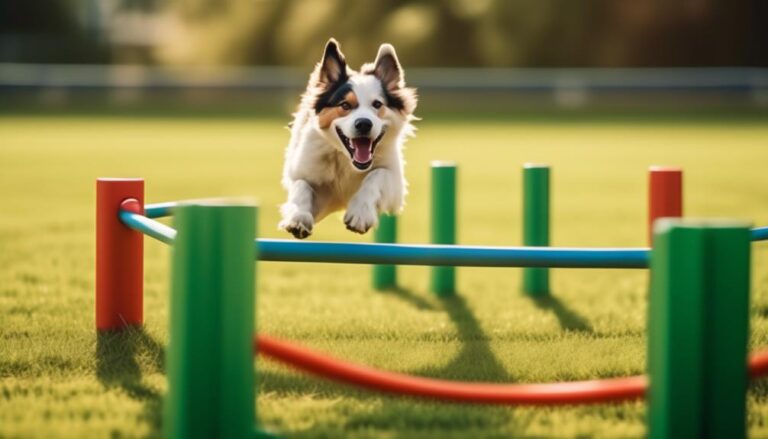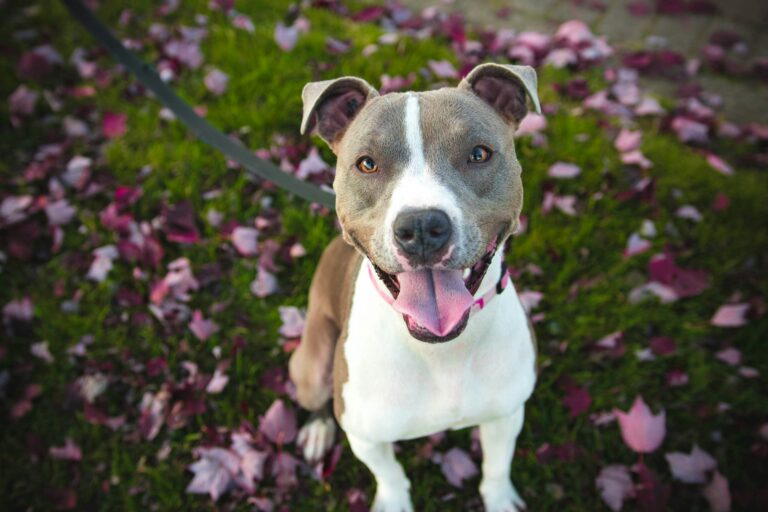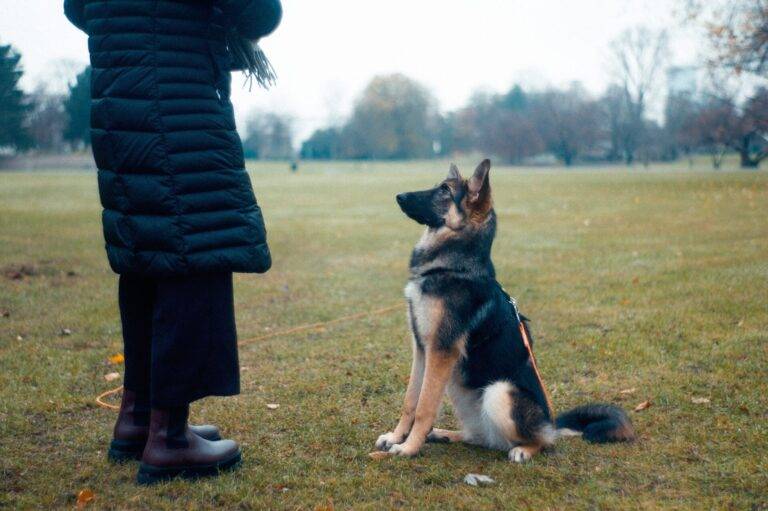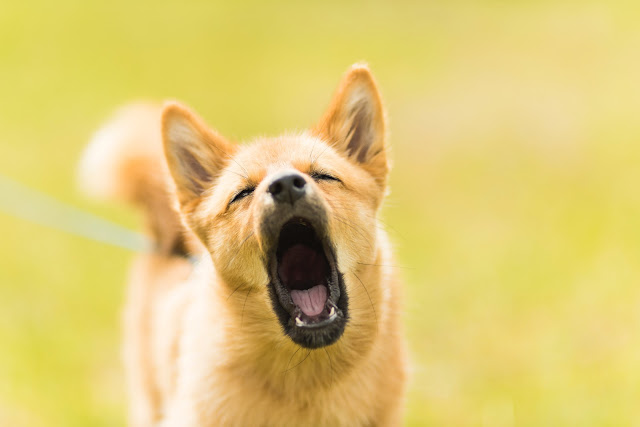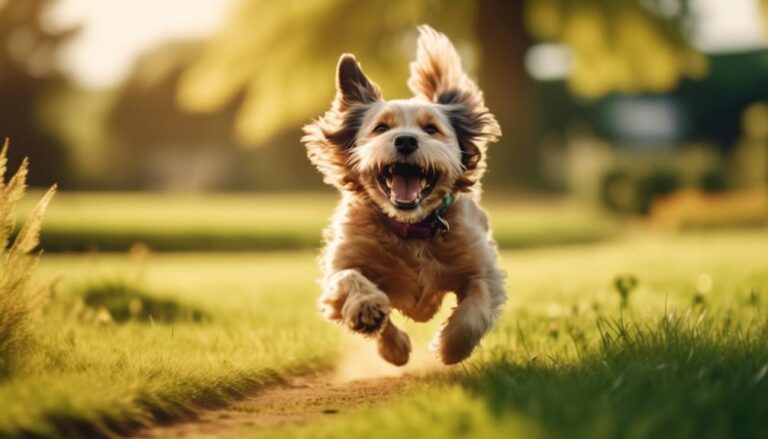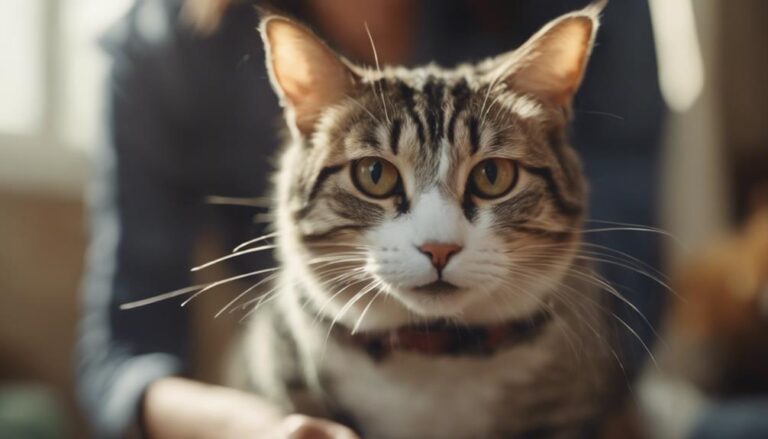The 10 Most Important Things To Remember When Training Your Puppies
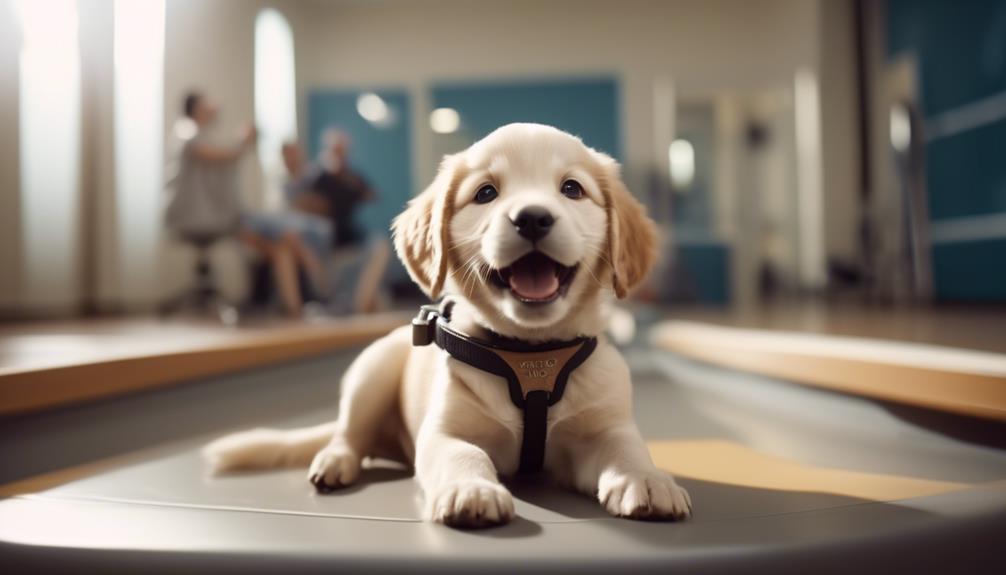
Important Things To Remember When Training Your Puppies As you embark on the journey of training your new little friends where they are well-behaved, obedient, and a joy to be around. But how do you get there? In this discussion, we will explore the ten most important things to remember when training your furry companions. From establishing a routine to nurturing love and trust, each aspect plays a crucial role in shaping your puppy’s behavior. So, if you’re ready to unlock the secrets of successful puppy training, keep on reading to discover the key ingredients that will pave the way to a harmonious relationship with your four-legged friend.
Establishing a Routine
To establish a routine for your puppy, begin by creating a consistent schedule for meals, potty breaks, playtime, and training sessions. Training dogs requires consistency and repetition, and having a routine is crucial in teaching your puppy the behaviors you desire. By sticking to a schedule, you provide a sense of predictability and stability for your puppy, which can help decrease accidents and anxiety.
A routine is important because it allows your puppy to anticipate what will happen next. For example, if you consistently take your puppy outside for a potty break after every meal, they will learn to associate that time with going outside to relieve themselves. This helps in potty training and prevents accidents inside the house. Similarly, having a set time for play and training sessions helps your puppy understand when it’s time to engage in fun activities and learn new commands.
Positive reinforcement is a key component of training, and having a routine can optimize its effectiveness. When your puppy understands the routine, you can reward them for following it. For instance, if your puppy sits patiently before mealtime, you can praise them and give them a treat. This reinforces the desired behavior and encourages them to continue behaving in that manner.
Establishing a routine for your puppy is not always easy, but the benefits are well worth the effort. If you’re unsure how to create a consistent schedule, consider enrolling in a training course. Professional trainers can provide guidance on establishing and maintaining a routine that suits both you and your puppy. Remember, a routine is an essential part of training your puppy and creating a happy, well-behaved companion.
Positive Reinforcement Techniques
When it comes to training your puppies, positive reinforcement techniques are key. By using rewards for good behavior, you can reinforce the behaviors you want to see more of. Consistency in training is also important, as using the same words and intonation for commands helps your puppies understand what is expected of them. Remember to be patient and persistent in your training efforts, as it may take time for your puppies to fully grasp and consistently exhibit the desired behaviors.
Rewards for Good Behavior
Rewarding good behavior is an essential aspect of training your puppies, and using positive reinforcement techniques, such as treats and praise, can be highly effective. When teaching your puppy, it is important to consistently reinforce good behavior with rewards. This helps them understand what behavior is desired and encourages them to repeat it.
You can reward your puppy with treats, praise, or playtime when they exhibit the desired behavior. By associating good behavior with positive experiences, your puppy will be motivated to continue behaving well. It is crucial to avoid punishment and focus on reinforcing positive behaviors to create a strong training foundation. If you need guidance on positive reinforcement techniques for effective training, it is advisable to seek professional assistance.
Consistency in Training
Consistency in training is essential for effectively teaching your puppies positive reinforcement techniques. When training your new furry friend, it is important to keep a few things in mind. Firstly, using the same words and intonation when giving commands will help your puppy understand what is expected of them. This consistency allows them to make associations between the command and the desired behavior. Additionally, it is crucial to ensure that everyone in the household follows the same training methods and rules. Consistent training helps dogs learn new habits and behaviors more effectively. Inconsistency can confuse your puppy and hinder their progress in training. By maintaining a consistent approach, you can create a positive learning environment for your furry companion.
Patience and Persistence
To effectively reinforce positive behaviors and continue building a solid training foundation, it is important to practice patience and persistence when training your puppies. Using positive reinforcement techniques, such as rewards and praise, can be incredibly effective in teaching your puppy good behaviors. Remember, training takes time and consistency. Be patient with your puppy as they learn and understand that it may take several repetitions for them to grasp new concepts.
Avoid punishments or scolding, as these can create fear and anxiety in your puppy, hindering their progress. Seek professional guidance if needed to ensure you are using the most effective positive reinforcement methods. By practicing patience and persistence during your training sessions, you will help your new puppy learn basic obedience commands and develop into a well-behaved and happy companion.
Potty Training Basics
Make sure to use ultra-management techniques and take your puppy to her designated potty spot frequently to ensure successful potty training. It is important to teach your dog where to eliminate to avoid accidents in the house. Dogs need proper training to understand where it is appropriate to relieve themselves. Here are some potty training basics to help your puppy learn the proper habits.
Firstly, establish a routine. Dogs thrive on consistency, so having a set schedule for potty breaks will make it easier for your puppy to understand when it’s time to go. Take your puppy to her designated potty spot at regular intervals throughout the day, especially after meals, naps, and playtime. This will help prevent accidents and reinforce the desired behavior.
When your puppy eliminates in the desired spot, be sure to reward her. Positive reinforcement is key to successful potty training. Use treats, praise, or a favorite toy to let your puppy know she did a good job. This will reinforce the behavior and encourage her to continue going in the right place.
In addition to taking your puppy to the designated potty spot, it is also important to expose her to different surfaces. Dogs have preferences for where they like to go, so introducing your puppy to different textures, such as grass, concrete, or gravel, will help her feel comfortable going in various environments. This will make potty training easier when you’re out and about or when she needs to go to unfamiliar places.
Crate Training Essentials
After establishing a routine for potty training, it’s essential to also focus on crate training essentials for your puppy’s overall development and well-being. Crate training is a valuable tool in dog training as it provides a safe and comfortable space for your puppy. However, it’s important to remember a few key points to ensure effective crate training.
Firstly, it’s crucial to introduce the crate as a positive and inviting space. Make sure to place soft bedding and toys inside to create a cozy environment. Avoid using the crate as a form of punishment, as this can create negative associations and hinder the training process.
To help your puppy associate the crate with positive experiences, use treats and toys. Start by rewarding your puppy for entering the crate voluntarily and gradually increase the time they spend inside. This will help prevent anxiety and make your puppy feel more comfortable in the crate.
While crate training can be done by puppy owners, seeking guidance from a professional dog trainer can be beneficial. They can teach you the important things to teach your puppy first and provide effective crate training techniques tailored to your puppy’s needs.
Remember to never force your puppy into the crate or leave them inside for extended periods. The crate should be a place where your puppy feels safe and secure, not a place of confinement. With patience, consistency, and positive reinforcement, crate training can be a valuable tool in helping your dog become well-behaved and comfortable in various situations.
Teaching Recall and Come Commands
When teaching your puppy recall and commands, it is important to use a distinct and consistent verbal command. Choose a word like ‘come’ or ‘here’ and make sure everyone in your household uses the same command. Consistency is key in training a puppy, as it helps them understand what is expected of them.
The first thing to remember when training a puppy to come is to start in a low-distraction environment. Begin indoors or in a fenced yard where there are minimal distractions. Gradually increase the level of distractions as your puppy becomes more proficient at the command. This will help them generalize the command and respond even in more challenging situations.
One of the most important things to remember is to always reward your puppy when they come to you. Use high-value treats or toys that your puppy finds motivating. This positive reinforcement will help them associate coming to you with something enjoyable and increase their willingness to respond to the command.
It is crucial to avoid scolding or punishing your puppy when they come to you. This can create negative associations with the recall command and make them hesitant to come in the future. Instead, focus on positive reinforcement and make coming to you a rewarding experience for your puppy.
If you feel like you need additional guidance, consider enrolling in a recall training course. These courses provide step-by-step guidance and professional assistance to help you train your puppy to come reliably. They can offer valuable tips to help you overcome any challenges you may encounter during the training process.
Leash Training Tips
Now it’s time to tackle leash training with your puppies. Proper leash handling is crucial, so make sure to hold the leash firmly but not too tightly. Use positive reinforcement techniques, such as rewarding your puppies with treats or praise when they walk calmly on the leash. Remember to be consistent and patient throughout the training process to achieve the best results.
Proper Leash Handling
To properly handle your puppy’s leash, employ positive reinforcement and gradually increase the duration of your walks. Start by taking short walks and gradually increase the distance as your puppy becomes more comfortable. Using positive reinforcement, such as treats or toys, will help keep your puppy’s attention and encourage loose leash walking.
Remember to reward your puppy whenever they respond better to your cues and walk calmly beside you. It’s important to teach your dog to walk on a leash without pulling, as this will make your walks more enjoyable for both of you. Practice leash walking in different environments to generalize the behavior. With consistency and patience, even lead-pulling puppies can become well-behaved walkers. Take it one step at a time, and each training session will bring you closer to getting your puppy to walk nicely on a leash.
Positive Reinforcement Techniques
To effectively train your puppy to walk on a leash using positive reinforcement techniques, focus on rewarding them for walking calmly without pulling. Positive reinforcement, such as treats or praise, is a powerful tool in encouraging good behavior. Start with short walks and gradually increase the duration, using treats or toys to keep your puppy’s attention. Practice leash walking in different environments to help your pup learn to walk calmly in any situation.
It’s important to keep in mind that you should never let your puppy pull on the leash, as this can lead to behavior problems and make walks less enjoyable for both of you. Consider enrolling in a leash walking course or seeking guidance from a professional trainer to learn new techniques and improve your pup’s leash walking skills. By using positive reinforcement, you can create a happy and healthy walking experience for your furry friend.
Consistency and Patience
Consistency and patience are crucial when it comes to leash training your puppy, as they help establish and reinforce the desired behaviors. During each training session, be consistent in your commands and expectations, reinforcing the same behaviors every time you walk your puppy. Use positive reinforcement, such as treats or praise, to reward your puppy for walking calmly on the leash. Remember to be patient, as leash training takes time and progress may be slow.
Avoid rushing your puppy and allow them to adjust at their own pace. Practice leash training in various environments to help your puppy generalize the behavior and adapt to different situations. By maintaining consistency, practicing patience, and following these training tips, you can teach your puppy proper leash manners and ensure a positive walking experience.
Mastering Basic Commands
Start your puppy’s training journey towards mastering basic commands by creating a distraction-free environment. This means finding a quiet space where your puppy can focus solely on you and the training session. Remove any potential distractions, such as toys or other pets, to ensure your puppy’s undivided attention.
During every training session, use positive reinforcement to reward your puppy for following commands. When teaching your puppy to sit, for example, give them a small treat or praise them with excitement and affection when they successfully execute the command. This positive association will motivate your puppy to continue learning and obeying commands.
Introduce new commands gradually, starting with simple ones like sit, stay, and come. Remember to be patient and consistent with your training. Repetition is key to reinforcing the behavior and helping your puppy understand what you expect from them.
To ensure your puppy responds to commands from different people, involve other family members or friends in the training process. This will help your puppy generalize the commands and follow them regardless of who gives the instruction.
As your puppy progresses, it’s important to practice commands in different environments and with distractions. This will help them develop impulse control and the ability to focus even when there are other stimuli around. Start by introducing mild distractions, such as toys or low-level noises, and gradually increase the difficulty as your puppy becomes more proficient in following commands.
Remember to keep it positive throughout the training process. Avoid punishments or negative reinforcement, as these can confuse and discourage your puppy. Instead, focus on rewarding good behavior and providing a supportive and encouraging environment.
Grooming and Handling Skills
Now that your puppy has mastered basic commands, it’s time to focus on grooming and handling skills to ensure they are comfortable with necessary care routines. Grooming and handling are important parts of your puppy’s overall well-being and can help prevent unwanted behavior in the future. Here are ten important things to remember when training your puppies in grooming and handling skills.
- Start early: Introduce your puppy to grooming and handling from a young age. This will help them become familiar and comfortable with the process.
- Make it positive: Use positive reinforcement techniques, such as treats and praise, to reward your puppy for good behavior during grooming sessions.
- Take your time: Grooming should be a relaxed and enjoyable experience for your puppy. Take your time and go at their pace to avoid causing any stress or anxiety.
- Be gentle: Handle your puppy gently and with care. This will help them feel safe and secure during grooming.
- Use proper tools: Invest in grooming tools that are suitable for your puppy’s age and breed. This will ensure you can groom them effectively and safely.
- Gradually introduce new experiences: Gradually introduce new grooming experiences, such as nail trimming or bathing, to your puppy. This will help them become accustomed to these routines.
- Get your puppy used to being touched: Regularly touch and handle different parts of your puppy’s body, including their paws, ears, and mouth. This will help them get used to being touched and examined by veterinarians in the future.
- Prevent chewing: Provide your puppy with appropriate chew toys to redirect their chewing behavior. This will prevent them from chewing on grooming tools or other household items.
- Practice training commands: Incorporate training commands, such as “sit,” “stay,” and “down,” into your grooming sessions. This will help reinforce their obedience and create a positive association with grooming.
- End on a positive note: Always end grooming sessions on a positive note, with praise and rewards. This will help your puppy associate grooming with a positive experience.
Building Impulse Control
To develop your puppy’s self-control and promote calmness, incorporate impulse control games and training into their daily routine. Impulse control is an essential skill that will help your puppy make better choices and respond to your commands more effectively. By teaching your puppy to resist immediate temptations, you are building a foundation for obedience training and ensuring their safety.
One effective way to build impulse control is through games. Start by asking your puppy to sit and stay while you hold a treat in your hand. Slowly move the treat towards their face, but if they try to snatch it, close your hand and say “no.” Repeat this exercise several times, gradually increasing the level of difficulty. This game teaches your puppy to resist the impulse to grab the treat and wait for your command.
Take your time when practicing impulse control. For example, during mealtime, ask your puppy to sit and wait until you give the signal to eat. This reinforces the idea that they must wait for permission before indulging in their meal. Similarly, when going for walks, ask your puppy to sit and wait before crossing the road or approaching other dogs. This teaches them to control their impulses and stay focused on them.
Incorporating tasty treats into your puppy’s training sessions can be highly effective in building impulse control. Use these treats as rewards for good behavior and as incentives for your puppy to resist impulsive actions. By giving your dog a treat every hour or so, you are reinforcing the importance of self-control and creating positive associations with obeying your commands.
Nurturing Love and Trust
To further foster the development of impulse control, it is crucial to nurture love and trust with your puppy through consistent positive interactions and reinforcement. Spending quality time with your puppy is key to strengthening the bond and building trust. Take your time to show your puppy that you are there for them and that they can rely on you. Use positive reinforcement, such as treats and praise, to show love and encourage desired behaviors. When your puppy does something right for the first time, make sure to name it in a happy and excited tone, so they associate that behavior with positive feelings.
Handling your puppy gently and patiently is essential in nurturing love and trust. Approach them with a calm and reassuring demeanor, and avoid any rough or aggressive behavior. This will help foster a sense of security and safety for your puppy, allowing them to feel comfortable and trust you. Be consistent in your interactions and training. Dogs thrive on routine, so it is important to establish a consistent schedule and stick to it. This consistency will help build a strong foundation of trust and affection between you and your puppy.
If you encounter challenges in nurturing love and trust with your puppy, don’t hesitate to seek professional guidance. Trainers and behaviorists can provide valuable advice and support, especially if you are struggling with specific issues. Remember, building love and trust takes time and patience. Show your puppy that you are there for them, and they will reciprocate with love and trust in return.
Important Things To Remember When Training Your Puppies Frequently Asked Questions:
What Are the Most Important Things to Teach a Puppy?
To teach your puppy the most important things, focus on potty training by taking them outside regularly. Teach basic obedience commands like sit, stay, and come using positive reinforcement. Socialize them with new people and animals. Help them control biting during play. Make their crate a comfortable space.
What Is the First Thing You Should Train Your Puppy?
The first thing you should train your puppy is their name. It’s essential for communication and basic obedience. Teaching them their name will make it easier to teach commands like crate training, potty training, and leash training.
What Are the 7 Commands to Teach a Puppy?
To teach your puppy the 7 basic commands, start with sit and stay. Then, work on coming and fetching to ensure their safety. Train them to lie down and stay with down and stay. Teach leave it, heel and walk, off and on, and wait and release for better obedience.
What Is the Hardest Thing to Teach a Puppy?
Teaching a puppy impulse control and self-restraint is the hardest part. They need to learn biting control, calm leash walking, and basic commands. Consistency, positive reinforcement, and socialization are key to effective training and building a strong bond.
Conclusion
In conclusion, training your puppy requires patience, consistency, and love. By establishing a routine, using positive reinforcement techniques, and focusing on potty and crate training, you can set your puppy up for success. Teaching basic commands, grooming, and handling skills, and building impulse control are also important aspects of training. Lastly, remember to nurture love and trust with your puppy throughout the process. With these key principles in mind, you can have a successful and enjoyable training journey with your furry friend.



